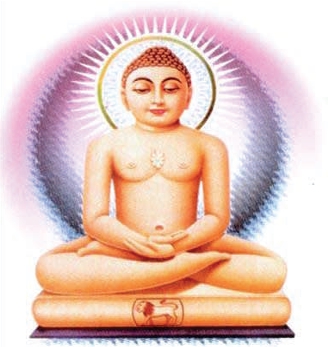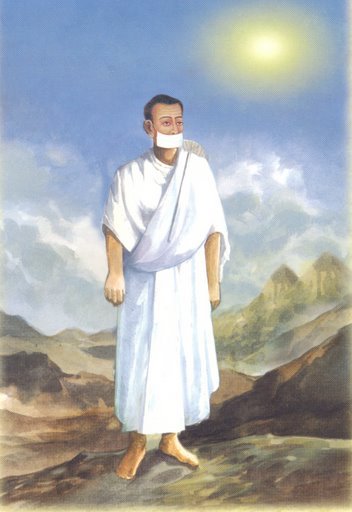
Hemacandra's Works
Hemacandra was the most versatile and prolific Jaina writer of Sanskrit. Since he composed works in the most varied domains, he was called 'the Omniscient of the Kali Age (Kalikālasarvajña). He was born in 1089 A.D. and died in 1172 A.D. He belonged to the Śvetāmbara sect. His patrons were the Caulukya kings Jayasiṁha (Siddharāja) and Kumārapāla of Gujarat.
The Siddhahema-śabdānuśāsana and the Liṅgānuśāsana are two important works on grammar by Hemacandra. The Siddhahema-śabdānuśāsana is in eight chapters. It has the author's own commentaries as well as commentaries by others. Its first seven chapters are on Sanskrit grammar and the eighth one, i.e., the last chapter is on Prakrit (including Apabhraṁśa) grammar. The Liṅgānuśāsana contains 138 verses. It is also commented upon by the author himself as well as by others.
Hemacandra's lexicons include the Abhidhānacintāmaṇi, the Anekārthasaṅgraha, the Deśīnāmamālā and the Nighaṇṭuśeṣa. The Abhidhānacintāmaṇi consists of six chapters. The Anekārthasaṅgraha and the Nighaṇṭuśeṣa are its supplements. It has the author's own commentary as well as commentaries by others. The Deśīnāmamālā (also called Ratnāvalī) was the latest and probably the largest of ancient Indian lexicons of a certain class of Prakrit words. In this lexicon the author has quoted Abhimānacihna, Avantisundarī, Devarāja, Dhanapāla, Droṇa, Gopāla, Rāhulaka, Śāmba, Śīlāṅka, Sātavāhana and Pādalipta (only mentioned). It is also commented upon by the author himself.
The Kāvyānuśāsana by Hemacandra is an excellent work on rhetoric. It is in eight chapters. It has two commentaries by the author himself. The commentary that explains the aphorisms is called Alaṅkāracūḍāmaṇi and that which explains the Alaṅkāracūḍāmaṇi is known as Viveka.
The Chandonuśāsana is a work on metrics by Hemacandra. It has the author's own commentary.
Hemacandra's Dvyāśrayakāvya (The Poem with a Double Purpose) is intended to give the life-stories of the author's patrons as well as to illustrate the rules of Sanskrit and Prakrit grammar contained in the author's Siddhahema-śabdānuśāsana. It is divided into two parts.
The first part, which is in Sanskrit, contains twenty cantos. It describes the Caulukya dynasty and the life of King Jayasiṁha (Siddharāja). The rules of Sanskrit grammar are illustrated in this part. The second part (usually known as Kumārapālacarita), which is in Prakrit, contains eight cantos. It describes the life of King Kumārapāla and at the same time illustrates the rules of Prakrit grammar.
The Triṣaṣṭiśalākāpuruṣacarita (The Lives of the Sixty-three Excellent Men) by Hemacandra is a big poem. It is divided into ten sections. The author himself describes it as an epic poem. It contains the life-stories of the 63 Great Men. The Pariśiṣṭaparvan or Sthavirāvalīcarita is the appendix to the Triṣaṣṭiśalākāpuruṣacarita. It contains the life-stories of the Elders (Sthaviras).
Hemacandra composed a few hymns, too. His Vītarāgastotra is a poem in praise of the passionless Lord Mahāvīra. It is at the same time a poetical manual of Jainism. It consists of twenty small sections. The Ayogavyavacchedadvātriṁśikā of the author forms the first part of his hymn called Dvātriṁśikā. The second part is called Anyayogavyavacchedadvātriṁśikā. The first part contains an easy exposition of the doctrines of Jainism. The second part refutes the doctrines of the non-Jaina systems. It has a commentary called Syādvādamañjarī by Malliṣeṇa. This commentary serves as an excellent treatise on Jaina philosophy.
The Pramāṇamīmāṁsā by Hemacandra is a valuable work on Jaina logic. Its commentary by the author himself enhances the value of the work.
Hemacandra's Yogaśāstra is an important work on Jaina yoga. It is in verse and has twelve chapters. The author himself has commented upon it. The work contains a complete doctrine of duties. It treats of the effort one must make to attain emancipation.
The Arhannīti or Laghvarhannīti composed by Hemacandra is a valuable treatise on Jaina polity. It contains instructions and rules of conduct for kings, ministers, generals and other State officials.
Works of Rāmacandra
Rāmacandra, the chief disciple of Hemacandra, was an exceptionally prolific writer of Sanskrit dramas. He was a great poet and the author of about a hundred works. As many as forty-seven of his works are -known at present. His plays include the Nalavilāsa, the Satyahariścandra, the Nirbhayabhīma, the Kaumudīmitrānanda etc. The Nāṭyadarpaṇa is an important work on dramaturgy composed by Rāmacandra in collaboration with his co-pupil Guṇacandra. His poems and hymns include the Kumāravihāraśataka, the Yugādidevadvātriṁśikā, the Prasādadvātriṁśikā, the Ādidevastava, the Nemistava etc.
He had also composed an excellent treatise on Jaina philosophy, entitled Dravyālaṅkāra, in collaboration with Guṇacandra. His commentary on the Siddhahema-śabdānuśāsana is a valuable work on grammar.

Dharmāmṛta of Āśadhara
Āśadhara was a great Digambara scholar and poet of the 13th century. He composed a number of learned works and commentaries in Sanskrit. The Dharmāmṛta is his principal work. It is in two parts:
The Sāgāra-Dharmāmṛta deals with the duties of the lay-votary, whereas the Anagāra-Dharmāmṛta treats of the conduct of the ascetic. The author himself composed a commentary on this work in 1243 A.D. The original work is in verse.
Jinaprabhasūri's Tīrthakalpa
Jinaprabhasūri was a famous Śvetāmbara scholar belonging to the 14th century. He wrote several works in Sanskrit, Prakrit and Apabhraṁśa. Various commentaries were also composed by him. His Tīrthakalpa or Vividhatīrthakalpa is a semi-historical work. It gives a description of different Jaina places of pilgrimage along with the names of their founders and the kings who restored them. It also records the relevant dates of different events. The work is partly in Sanskrit and partly in Prakrit, partly in prose and partly in verse. Its different parts were written separately and then put together by the author. This fact is revealed by the author himself.
Yaśovijaya's Works
Yaśovijaya was a prominent Śvetāmbara writer of the 17th century. He composed several excellent treatises and various valuable commentaries in Sanskrit. His works oh philosophy include:
Some of his valuable commentaries are on the:
He composed some works in Gujarati, too.
It is clear from this brief introduction to Jaina literature that there is hardly any subject on which the Jaina authors have not been able to write. They have made valuable contributions to the entire range of Indian literature. They have produced religious and philosophical treatises, they have composed dramas and novels, they have written epics and hymns. They have composed a number of works on grammar, lexicography, poetics, metrics, logic, mathematics, astrology, astronomy, polity etc. Thus, they occupy an important position in the history of Indian literature. Their contribution is in no way less significant than that of the non-Jaina authors. Besides Prakrit, Sanskrit and Apabhraṁśa, they have produced valuable works in modern Indian languages, too.
 Mohan Lal Mehta
Mohan Lal Mehta